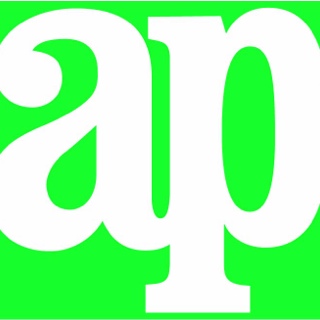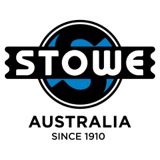Information
-
Audit Title
-
Client / Site
-
Conducted on
-
Prepared by
-
Location
-
Personnel
1. Working at Heights
-
1.1. Lack of edge protection for falls 6 feet or greater?
-
1.2. Unsafe or incomplete edge protection? Guardrails, toe boards?
2. Earth Moving Equipment and Tools (Power and Hand)
-
2.1. Unsafe or damaged equipment or tools? ( including missing or damaged guards)
-
2.2. Incorrect equipment or tools for job? (e.g. grinding disc for cutting)
-
2.3. Hand tools in good condition?
-
2.4. Trained and/or certified operators?
-
2.5. Powder actuated tools - signage, training, tool left unsupervised, unspent rounds?
-
2.6. Lack of LOTO procedures for cleaning, servicing, and maintenance?
-
2.7. Daily inspection checklists for equipment?
3. Scaffolds
-
3.1. Competent person for scaffold erection?
-
3.2. Unsafe or incomplete scaffold? Scaffold tagged?
-
3.3. Daily inspection documented?
-
3.4. Properly planked, guard rails, toe boards, components compatible?
-
3.5. Safe Work Load (SWL) exceeded? (tools, stored materials, number of persons)
4. Lifting Equipment/Cranes
-
4.1. Unsafe or damaged equipment?
-
4.2. Loads lifted over persons, close proximity to obstacles incl. overhead power lines?
-
4.3. Lack of maintenance, testing and inspection? Annual, monthly, and daily inspections for cranes?
-
4.4. Lack of safety stickers or operators manual?
-
4.5. Unsafe or damaged lifting equipment, including ropes, slings, chains, hooks?
-
4.6. Certified and/or trained operators, riggers, and signal persons?
-
4.7. Lack of LOTO procedures for cleaning, servicing and maintenance?
-
4.8. Safe working load of equipment exceeded?
5. Harness and Fall Protection Gear
-
5.1. Unsafe or damaged harness or equipment?
-
5.2. Incompatible hooks/equipment?
-
5.3. Unlabelled or does not meet OSHA standards?
-
5.4. Unsafe or uncertified anchor points?
-
5.5. Equipment not worn properly?
-
5.6. Lack of or inadequate formal training for operators?
6. Ladders/Stairs
-
6.1. Unsafe or damaged ladders?
-
6.2. Unsafe positioning of ladders? 3 feet above landing?
-
6.3. Ladder not properly secured?
-
6.4. Ladder unsuitable for job? Aluminum ladders? A-frame ladders used as extension ladders?
-
6.5. Ladder safety stickers, duty rating legible?
-
6.6. Stairs - handrails, stair rails, lighting, pans filled?
7. Pre-task Planning
-
7.1. Pre-task planning filled out?
-
7.2. Pre-task incomplete? Information missing?
-
7.3. Not following JHA procedures?
-
7.4. Lack of training on pre-task planning for individual workers?
8. Hazardous Chemical (including fuel and oil)
-
8.1. Unsafe storage location? (e.g. flammables near ignition sources, spills could enter stormwater drains, etc)
-
8.2. Incompatible chemicals stored near each other? Oxygen/acetylene not separated?
-
8.3. Inadequate spill containment equipment?
-
8.4. Safety Data Sheets not accessible on site?
-
8.5. Lack of emergency procedures for injury/spills/fire etc?
-
8.6. Excessive quantities stored on site or in vehicles?
-
8.7. Insufficient ventilation?
-
8.8. Insufficient, or incorrect, PPE?
-
8.9. Unsuitable storage containers? Unlabeled containers?
9. Emergency Response
-
9.1. Lack of emergency plans and crisis management plan for site? Crisis management kit?
-
9.2. Emergency procedures not displayed at site?
-
9.3. Lack of training and rehearsal of emergency plans? Drills conducted for plans?
-
9.4. Lack of, or inadequate first aid kits aid equipment for site? Kits inspected weekly?
-
9.5. Insufficient access to formally trained First Aiders for all shifts? A-P and subcontract foremen?
10. Traffic Management
-
10.1. Lack of, or inadequate, Traffic Management Plan (TMP) in place?
-
10.2. Lack of training in TMP for all persons on site? <br>(contractors and visitors)
-
10.3. Inadequate controls for TMP? (physical barriers, bollards, speed limits, flashing lights, spotters, etc)
11. Personal Protective Equipment (PPE)
-
11.1. Lack of, or inadequate PPE (including hearing protection)
-
11.2. Lack of training in safe use, clean-up and inspection of PPE?
-
11.3. Respirator program - medical exam, fit test, written program, voluntary use documentation?
12. Work Environment
-
12.1. Lack of/or inadequate amenities? (toilets, wash areas, lunch rooms, etc)
-
12.2. Insufficient lighting? Temp light maintenance?
-
12.3. Inadequate housekeeping?
-
12.4. Drinking water provided? Cups/trash receptacles?
-
12.5. Implement hazards protected? Rebar capped?
-
12.6. Laser training? Signs posted?
-
12.7. Floor holes covered or protected?
13. Electrical Hazards
-
13.1. Unsafe electrical cords/leads?
-
13.2. Lack of GFCI protection?
-
13.3. Exposure to underground utilities? Locate ticket in place?
-
13.4. Exposure to overhead electrical lines?
-
13.5. Overloading outlets?
-
13.6. Cords placed on ground or on metal structures? Cords protected from damage?
-
13.7. Electrical equipment or cords/leads near water?
-
13.8. Electrical equipment near flammables?
-
13.9. Electrical cords creating tripping hazard?
-
13.10. Lack of Lock-out/tag-out (LOTO) procedures for electrical equipment?
14. Environmental Hazards
-
14.1. Lack of/or inadequate Storm water plan? Narrative?
-
14.2. Lack of/or inadequate, dust suppression system? Dust control permit - training, SC logs, inspection logs?
-
14.3. Lack of/or inadequate systems to prevent contaminants entering stormwater drains? Inlets protected?
-
14.4. Confined space entry requirements in place? Competent person, entry plan, warning signs, rescue equipment, and air monitored?
15. Administrative Procedures
-
15.1. Lack of/or inadequate Site Safety Plan? Subcontractor site specific safety plan and health/safety manuals?
-
15.2. Failure to obtain permits (Hot Works, Confined Space, Dig Permits)
-
15.3. Lack of, or inadequate, site specific orientation for workers, contractors, visitors?
-
15.4. Lack of/or ,issuing supervision? Superintendent or foremen?
-
15.5. Lack of/or inadequate training, licenses, skills, experience?
-
15.6. Lack of/or inadequate site specific plans for high risk work - critical lifts, confined space, excavations, and fall protection?
-
15.7. Lack of, or inadequate system to review Site specific safety plans?
-
15.8. Lack of/or inadequate incident notification procedures?
-
15.9. Lack of, or inadequate, routine inspections, monitoring, audits?
-
15.10. Safety bulletin board posted?
-
15.11. Weekly tool box talks for A-P and all subcontractors?
-
15.12. Public safety - fencing, flaggers, cones, barricades, signs?
16. Fire Safety
-
16.1. Fire extinguishers properly located?
-
16.2. Monthly and annual inspections?
-
16.3. Fire watch and fire extinguishers for hot work?
17. Excavations and Trenching
-
17.1. Competent person?
-
17.2. Dig permit in place for each dig location? (Daily)
-
17.3. Proper sloping, shoring, benching (no benching for type C soil)? Spoils at least 2 feet from edge?
Corrective Actions
-
Enter any corrective actions that will be undertaken
Sign Off
-
On site representative
-
Auditor's signature












